Erik Undiks must have thought I’d lost my mind.
But I think these copper measuring cups are absolutely charming and I love them.

These were listed with one of my favorite eBay sellers, lazylou2002, who consistently finds a range of interesting copper pieces in good unrestored condition. (I check her listings every few days — her discerning selection and reasonable prices mean her pieces tend to get snapped up quickly.) Below are two photos from the listing for these cups. As you can see, they had mellowed to a fine dark patina and I was tempted to leave them unrestored. But if you look closely you will see some verdigris and other residue inside and around the handles. I intend to use these in my kitchen and so I felt they needed a good thorough cleaning, which for me meant sending them to a professional tinner for restoration.

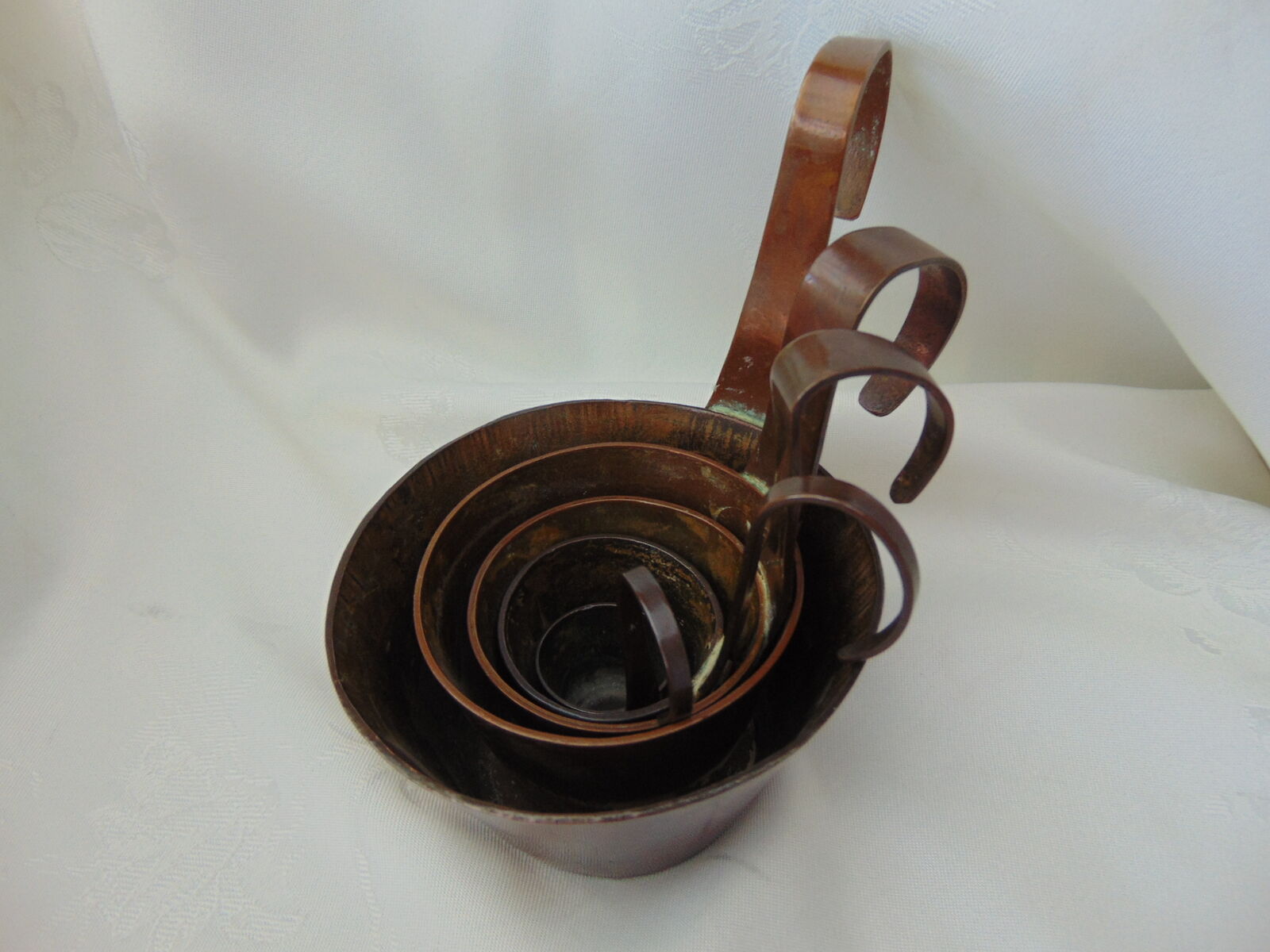
I sent them to Erik Undiks at Rocky Mountain Retinning and he did a marvelous job cleaning and polishing them. He asked me whether I’d like them tinned but after some reflection I asked him to leave them unlined. I did not see any traces of tin inside the cups in the listing photos above and I decided to keep them in their original state.

Copper measuring cups are fairly common, and below are the two types that I see most often. They tend to be tall cylinders with volume measurements stamped on the base or on a brass label attached to the sidewall. The cups are either seamless (and likely spun on a lathe) or have a crimp seam (not to be confused with a cramp seam, or dovetail) running around the base and up the side under the handle. They also have a rolled rim for reinforcement.
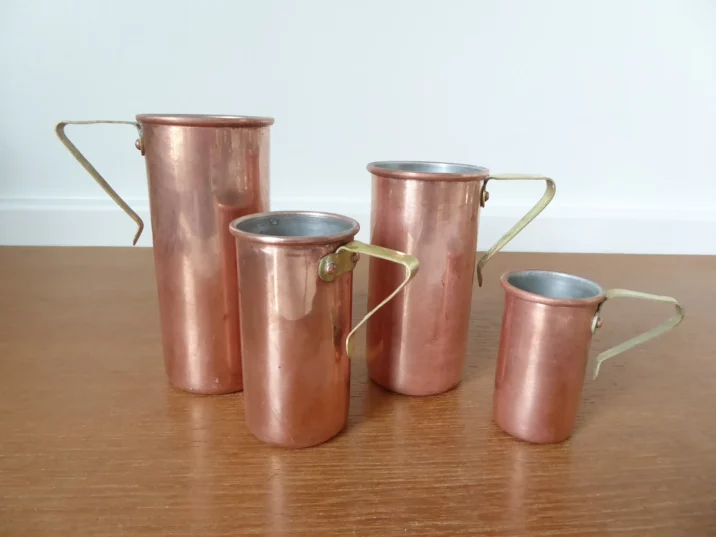
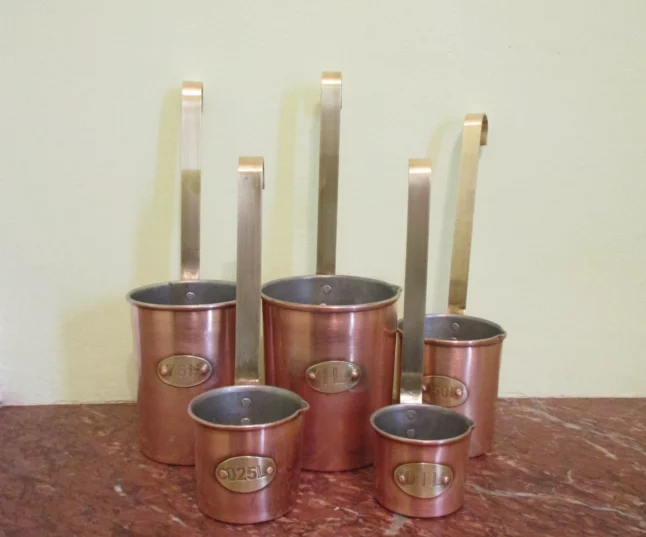
Mine are different. They are heavy for their size — 1.5mm thick (except for the tiny one, which is 1mm) — and have no reinforcement at the rim. The handles are not brass but instead a curl of pure copper. And finally, they are not marked with their volume. The photo below shows the set alongside a US imperial cup, half cup, and quarter cup measure for scale.

I filled each one to the brim with water to measure its capacity.
I have taken a good close look at their construction. The cups are seamless, which suggests to me that they were all shaped on a metal spinning lathe. The exterior surfaces have all been polished to a smooth shine but the interior of #4 (as shown below on the left) shows concentric rings down the sidewalls to the base. Could these marks have been left by the spinning process? I don’t know — I thought the force was applied to the exterior of the piece and would only leave tracks there, but I could be wrong. The exterior of the base of #5, the largest one, shown below at right, has some cratering in spots around the edge, but I think these might be divots from corrosion and not welding seams or anything like that. (Note also the prominent dot in the middle of the base of #5.)

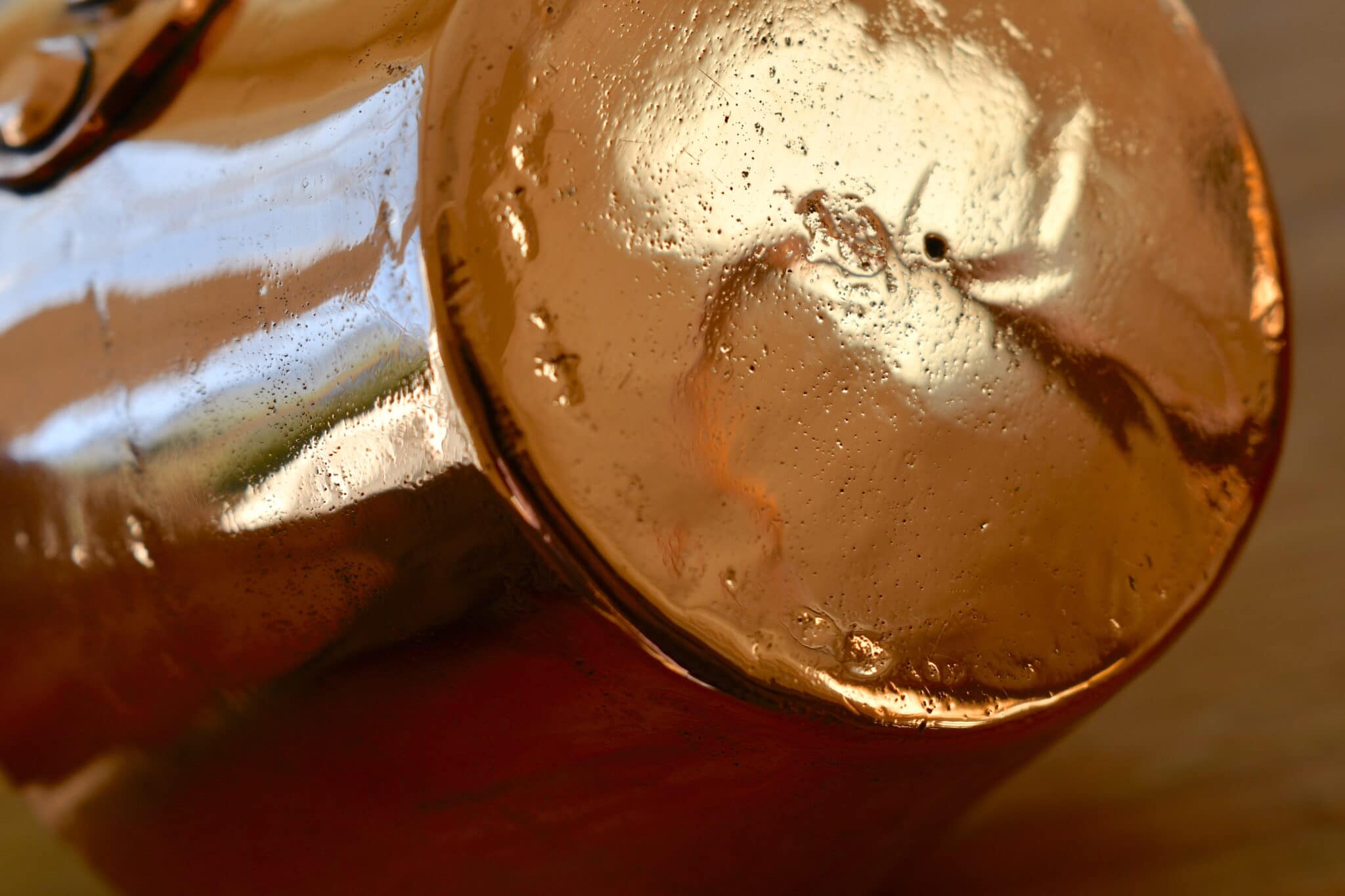
Each cup has one or two rivets that attach the handle. I do not think these were mass-produced pieces — the rivets are slightly misaligned.
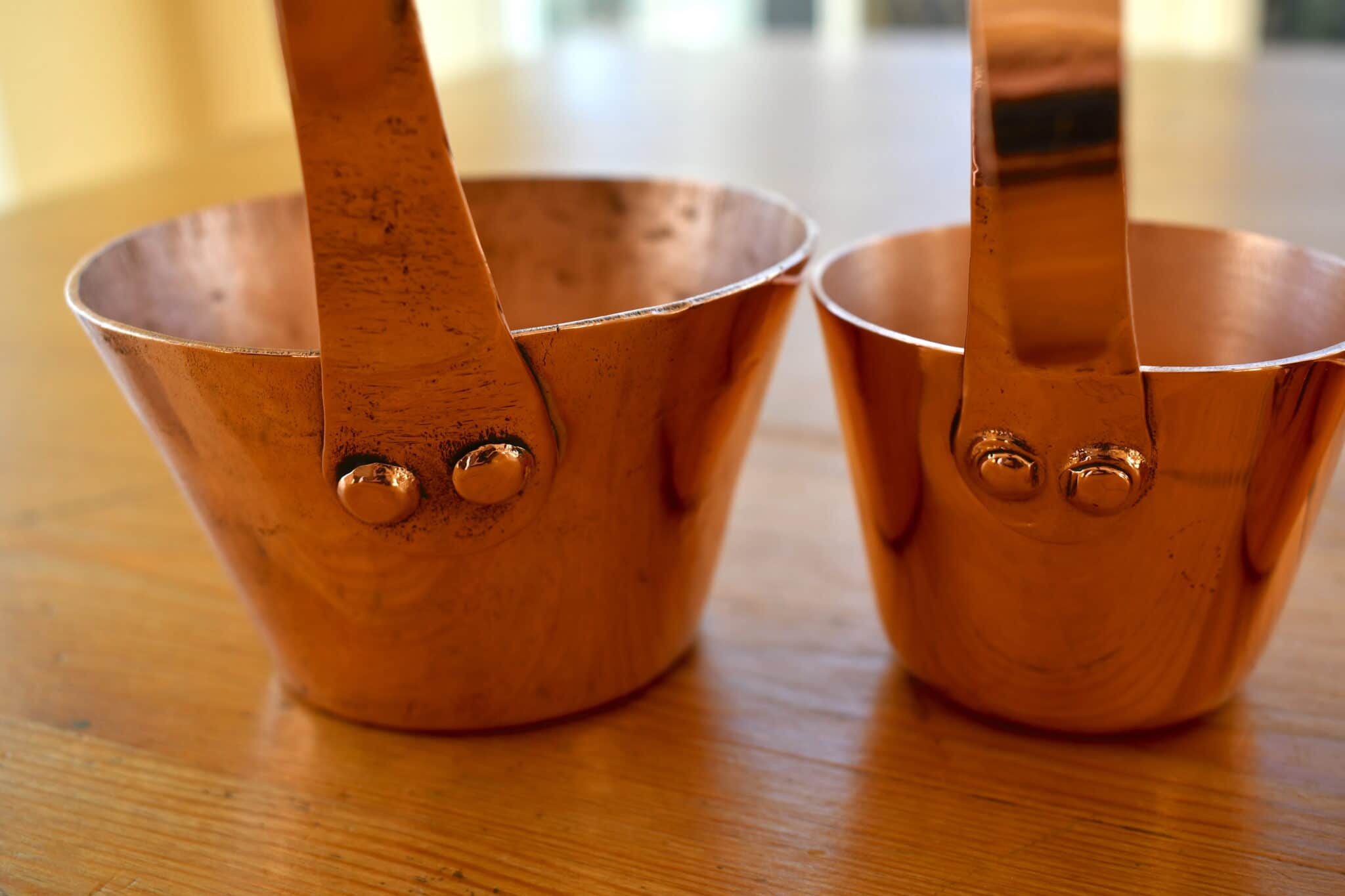
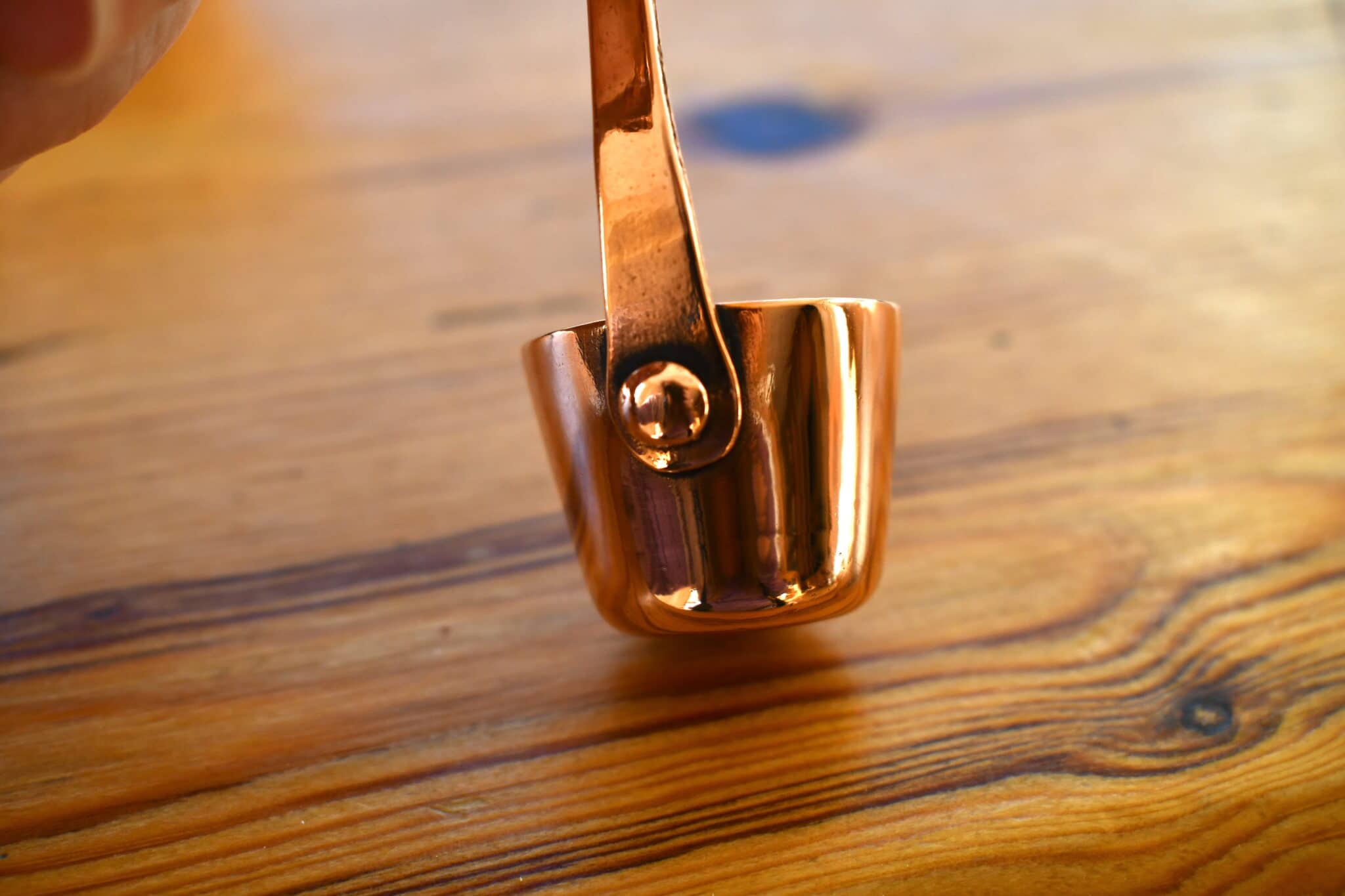
The interior rivets have all been polished down to be perfectly flush with the inner surface. Here are the two smooth rivets inside #5.
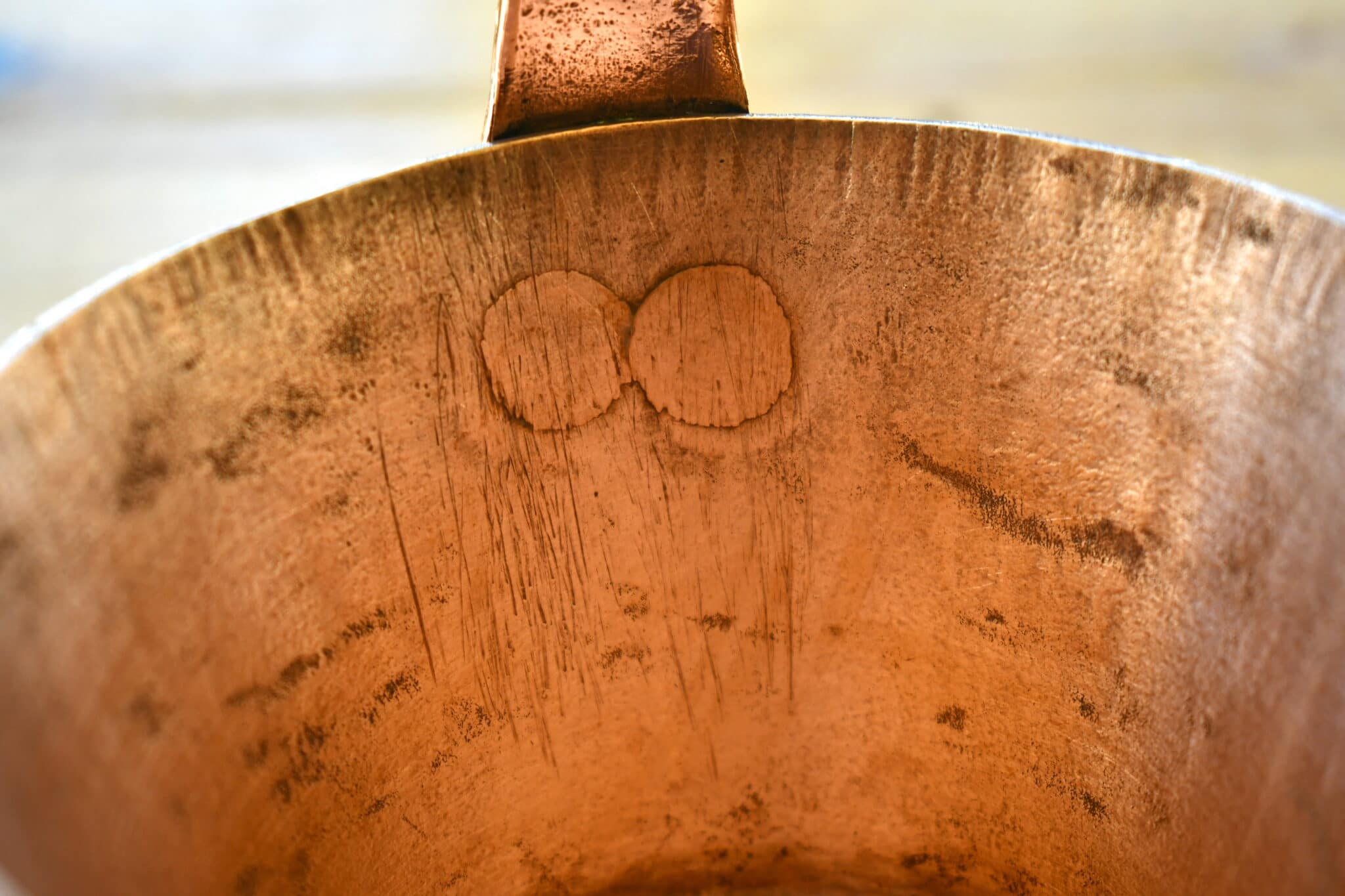
The handles are slender copper strips, wider at the riveted end, that have been curved to form a semicircular hanging handle. Here’s how they would look hanging from a rack.

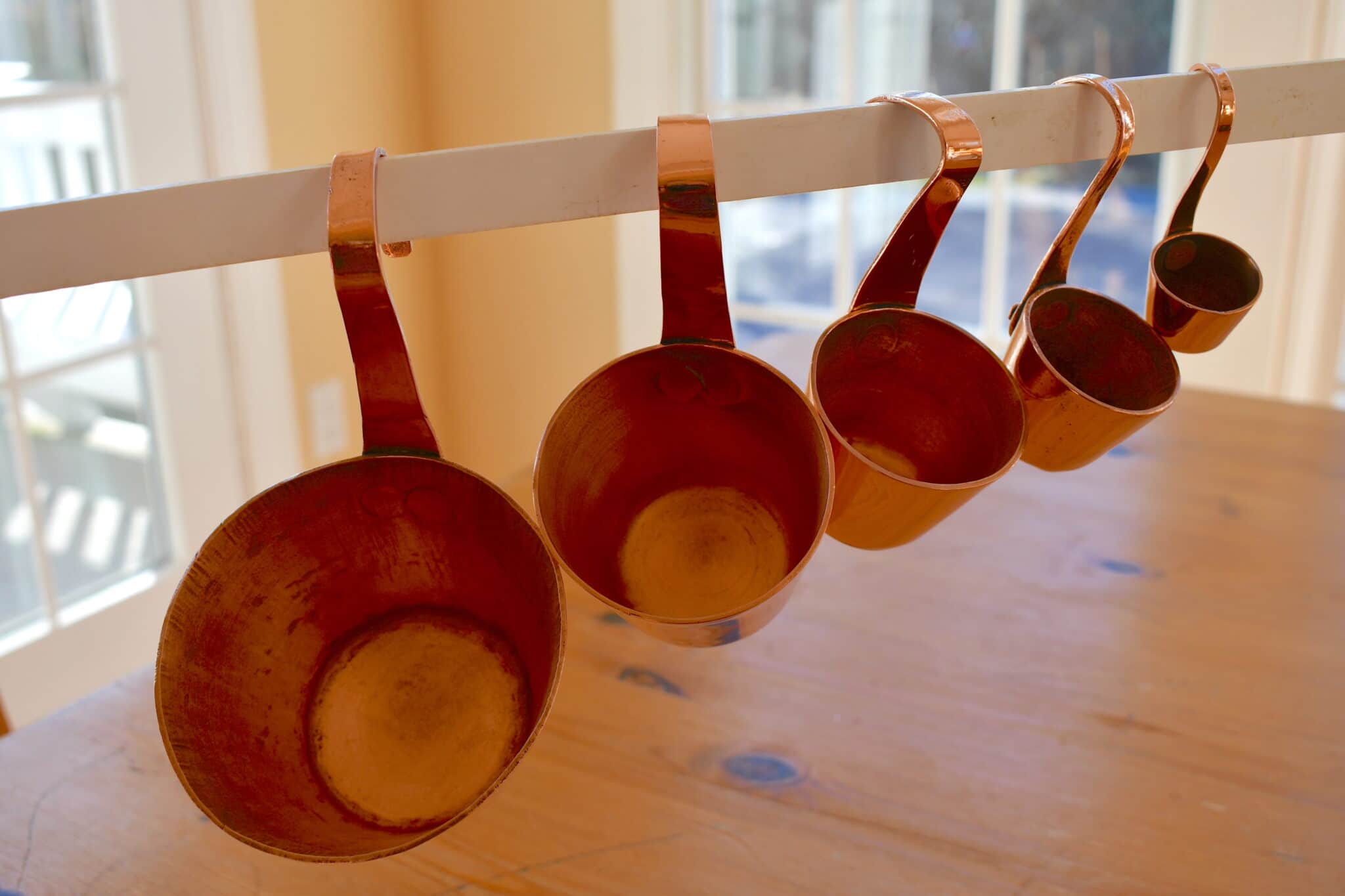
Erik asked me where I would like them tinned on the inside and after some consideration I decided not to do so. But the back surface of handle of the the #2 cup — the second smallest — has a lingering coat some kind of silvery metal. This is the only evidence of a coating on any of the cups. Is this tin? It could be, but to my eye it does not have the appearance of worn-down tin, which at its bottom-most layers is a dull pewter color. This silvery metal is too shiny to my eye. What else could it be — silver? I have a question in to Erik and will advise when he responds.
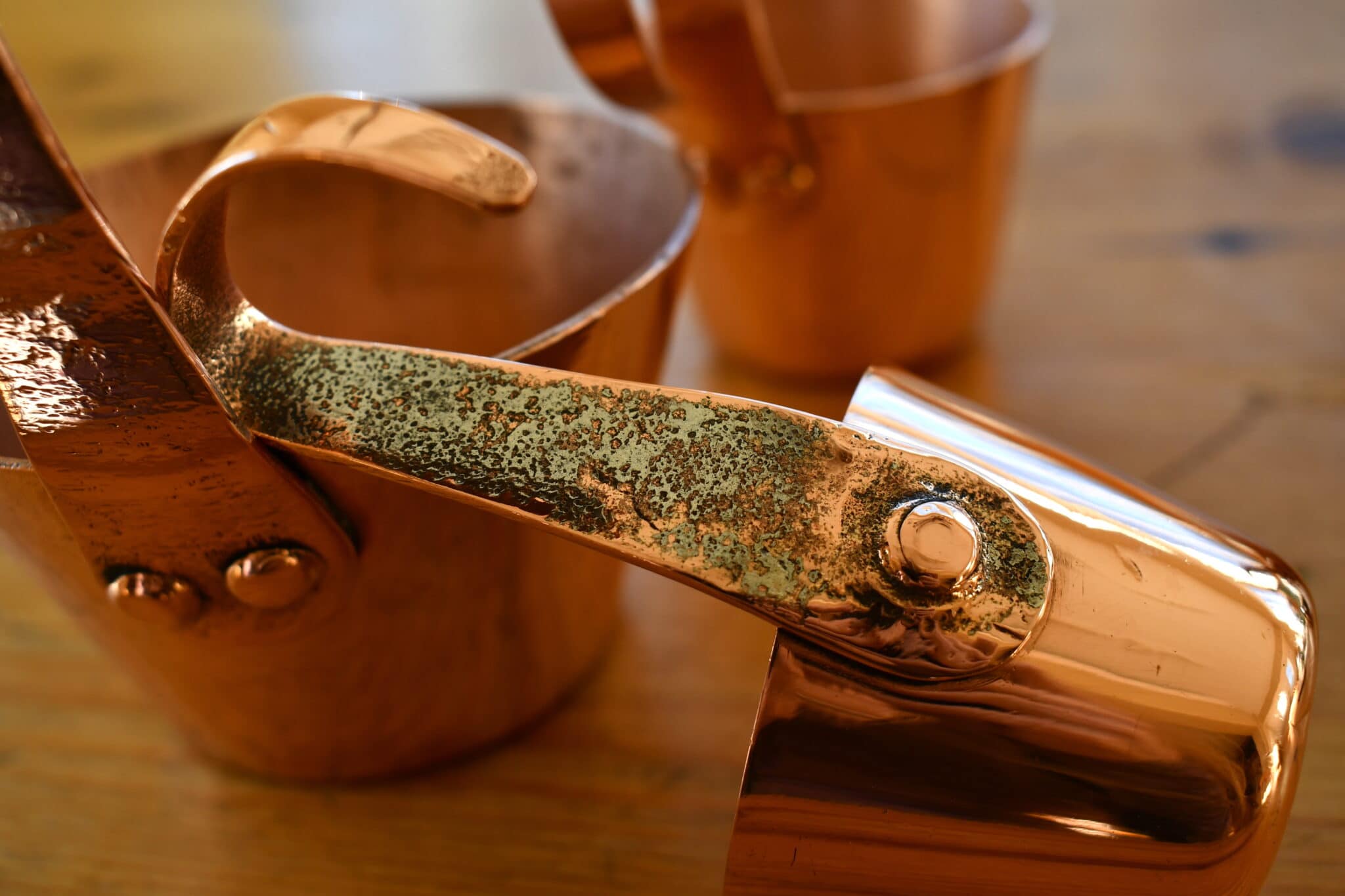
I just love these so much. I am determined to use them but I have to admit that they are not a natural fit for the pedestrian US cooking that I do. Their volumes are non-standard for modern US measurements — the usual cup, half-cup, quarter-cup and so forth. One thought I have is to use them to scoop ingredients for baking, which I measure by weight on a scale anyway. The long handles would be handy to dip into bags of flour and sugar.
Readers, what do you think? How should I use these?


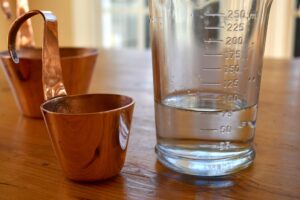

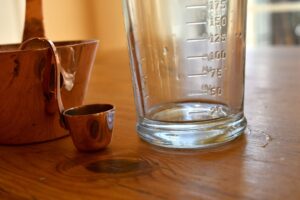





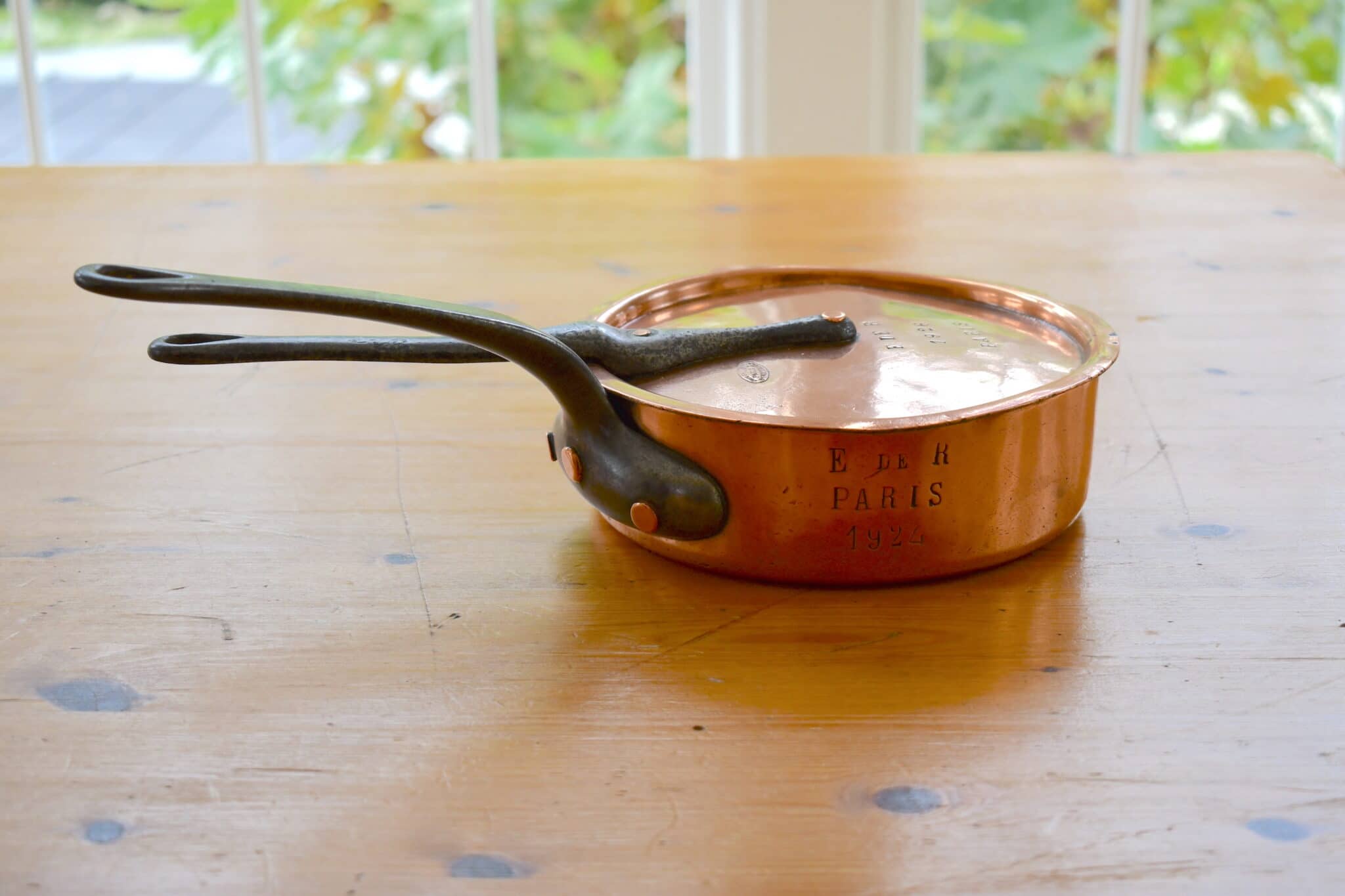
I have come across some similar ones but not as thick as these! Nice find. I personally, would use them for dry goods, like flour or sugar. You could use them for storage on a hook – sachets or small wrapped sugar cubes? I think though they could be used as they would have been when they were made, for scooping soups or sauces, measuring milk or anything you need a ladle for. Gorgeous polishing job too!
They are for making compound warm sauces in sauté.
If you think say béchamel, you will add milk, stock and flour. Using your cups, maybe you would use three measures of milk and one measure of stock and one measure of flour. The smallest of your cups that one is for flour. Butter one cuts.
The easiest way to learn this set is the flour measure. That is a single serving flour mesure, if 10ml. The larger cups are for multiple servings intended to be used in relative amounts.
As in one cup would be servings for two, another for four and another for eight. From my above example you may use the next smallest to measure three milks and one stock, then add two flour and two cuts of butter to make béchamel for two servings.
It is a nice set. Thanks for the article, because now I, too, know what to buy and I never thought of this until your article.
Cheers!
Bob, this is fantastic information and it explains the distribution of volume! I am so grateful for your cleverness here! Thank you!
I remembered these when I made Chicken a la King the other night.
The sauce is one part dry white wine, three parts chicken stock and one part heavy cream. I deglaze with the wine. I reduce the wine and chicken stock to desired nappe and I finish with the heavy cream.
By weight, flour is ten percent the weight of the liquid and the weight of butter should equal the weight of the flour. I always think your smallest cup is for flour.
One can use measuring cups, I do. But you can do it with some style using these fancy copper ones. I suppose if I stumbled onto the set I might also buy them.
so cool! Since they are handmade, it’s possible the reason there’s some silver on the handle of one is because whoever made them was using random bits from around the shop.